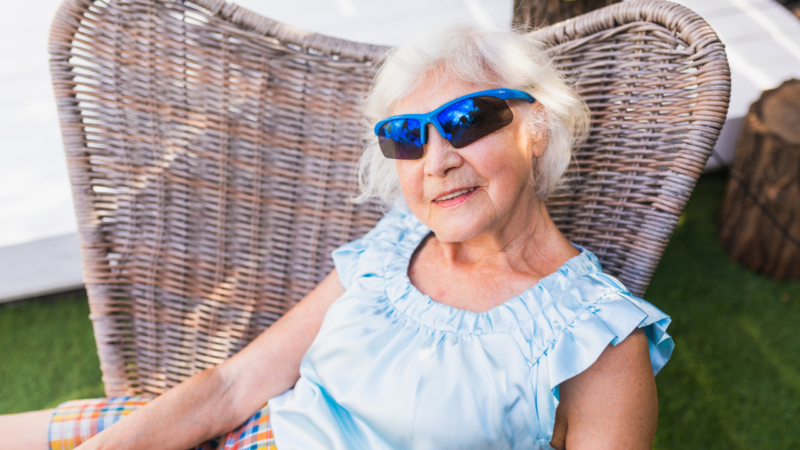Completing household tasks such are laundry and cooking can be strenuous work for seniors living independently at home, and family members will often offer to help if they notice Mum or Dad struggling with simple tasks.
However, completing these things can provide a real sense of independence and it can be a huge shock when you can no longer manage these on your own.
At The Physio Co, we understand how important it is for our elderly clients to maintain their independence, and often it’s the smallest tasks – such as hanging out your washing – that can be so important for an individual.
With this in mind, we’ve created a list of simple modifications that can be made to help Mum or Dad keep their independence for as long as possible.
Make laundry a whole lot easier
Hang clothes on hangers: When removing your clothes from the washing machine, give your clothes a quick shake and hang shirts, dresses, tops and pants on coat hangers – then hang these on the line. This reduces the need to reach overhead for a prolonged period pegging clothes on the line – and will make ironing easier!
Throw out your old, bulky ironing board: Speaking of ironing, investing in a small ironing board that sits on top of your kitchen table or bench will reduce the need to lug a big ironing board out into the hallway. It will also allow you to sit down while ironing so you can enjoy the task!
Don’t spend hours at the washing line: Hanging up socks and undies can be strenuous work as you constantly reach overhead to peg items on the line. You can either peg these items on coat hangers, lower your clothes line to shoulder height (if possible), buy a peg airer that can be placed on the clothes line, or use a clothes hoist inside. If using a clothes hoist, don’t move it around when fully loaded as it can be heavy and awkward – and a tripping hazard.

Comfort should be your only concern in the bedroom
Rearrange your wardrobe: Hang everyday clothes at eye level and store regular use items between chest and waist height. For occasional wear such as formal attire, store these above or below your ‘normal’ wardrobe as you won’t need to access these as often.
Double-sided tape: If you constantly find yourself twisting over in bed each night looking for the lamp switch, double-sided tape if your new best friend. Stick the lamp switch to the side of your nightstand so you can reach it without bending over, and it’s easily accessible in the dark.
Make getting into bed easier: If you are having trouble bringing your legs onto the bed, you can loop a long towel around your feet and use this to swing your legs onto the bed.
Light work in the kitchen
Use your bench: Place regularly used items at waist height or even on the bench if space allows. If you are constantly leaning down into a cupboard to retrieve your favourite pot or reaching up to fetch your coffee mug, your body is going to feel it over time. You can create areas such as a ‘coffee station’ on your bench with a handful of mugs, tea and coffee, and the kettle. This way you can easily make your beloved morning black coffee with one sugar without needing to bench or twist.
Fill only as much as you need: Speaking of coffee, do you always fill the kettle up the whole way despite only filling one or two cups? Create the habit of only filling the kettle with the desired amount of water. This will make it easier to carry, reduce the boil time and reduce the risk of burns.
Prioritise the position of your microwave: Not cooking much and using the microwave more these days? Perfect, make sure this is positioned between waist and chest height and doesn’t require you to bend down at every mealtime. If you are using your microwave more than twice a day, have this positioned on the bench. This reduces the need for bending or twisting and allows you to slide out the hot items, reducing the risk of burns.
Dumping box: If your home is anything like ours, the kitchen and specifically the kitchen table or bench is the ‘dumping area’ of the house. Having a small ‘dumping box’ can make tidying up much easier. Instead of lugging around awkwardly shaped items or making endless trips around the house, at the end of the day carry your ‘dumping box’ around the house returning items to where they belong. This will help you feel more organised, reduce the clutter in your home and, even better, help reduce tripping risk.
Lounge around in the lounge room, don’t work hard

Comfort over fashion: Invest in a chair that suits you and is comfortable for you. We cannot stress enough the importance of having a good-quality, high-back chair or recliner that you can rest in. Gone are the days where you would awkwardly sit in ‘fashionable’ chairs or lounges that provide no support and are so low to the ground that it takes a few goes to get back up. We are not saying get rid of your favourite furniture, but make sure you have a chair about knee height (when you’re standing), has a high back, has arm rests and provides enough support, so you are comfortable but don’t sink into the chair.
Coffee tables are a must: Speaking of relaxing… it’s frustrating when you sit down for afternoon tea and realise you have nowhere to place your cup. Make sure you have a small, sturdy coffee table next to your chair that is high enough (similar height to the arm rest) to place your items on without needing to reach over the armrest.
Enjoy stress-free time in the garden
Gardening station: Create a gardening station with all the tools you regularly need. Often we perform tasks kneeling on the ground that could be done standing at a bench. For example, when potting a plant, instead of transferring the plant between pots on the ground, lift these onto the table (if not too heavy) and complete the task here, reducing the time you need to kneel or bend.
Gardening chair: Have a designated gardening chair (any lightweight, plastic chair is fine) that you keep close when in the garden. This can act as a stool for your tools, somewhere you can rest and a support to help you get up from kneeling on the ground.
These are only some of the many ways you can make slight modifications to the way you do things that will make a world of a difference. We would love to hear how you go making these simple changes at home!

 1300 797 793
1300 797 793
